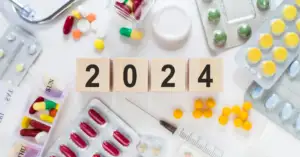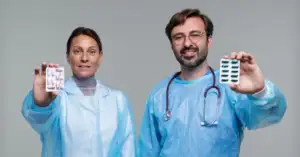A Reference Listed Drug (RLD) is the original, innovative, branded product that has been approved by regulatory agencies such as the Food and Drug Administration (FDA) in the United States and the European Medicinal Agency (EMA) in the European Union. The RLD continues to remain as a standard or benchmark for the generic copies to obtain licensing once the patent period from the RLD is over. The approval of the RLD undergoes several steps to obtain approval. It begins with the submission of a New Drug Application (NDA) from a pharmaceutical company that develops a new drug. Once this new drug is approved following all the safety and efficacy studies, the authorities assign the National Drug Code (NDC) to this innovative medicine as a special identifying number. Effective RLD sourcing and maintaining a reliable reference listed drug supply are crucial for ensuring that generic drug manufacturers can consistently produce high-quality, equivalent medications.
For a generic manufacturer, to manufacture the generic copies of the RLD needs to undertake several steps:
- Selection of the Reference Listed Drug (RLD): The first point is to choose the Reference Listed Drug (RLD). To verify all patent-related details and provisions under the legal framework to develop a copy of the RLD when the product patent is valid in the country, it is essential to conduct comprehensive research on the reference listed drug supply. This includes sourcing the RLD through reliable channels to ensure compliance with legal and regulatory requirements.
- Development of formulation: To develop a formulation that is qualitatively and quantitatively like the Reference Listed Drug (RLD), it is essential to ensure that the active ingredient, strength, dosage form, route of administration, and labeling are consistent with those of the RLD. This involves RLD sourcing to thoroughly analyze its composition and specifications. Making of similar formulation is all aspects is known as Pharmaceutical Equivalence.
- Preclinical Trials: The preclinical studies (animal experiments) are usually exempted from the generic manufacturers. However, if required, on a case-to-case basis, it could be requested by the regulatory authorities.
- Clinical trials- The generic drug needs to establish clinical equivalence to the RLD in terms of safety and efficacy. This is demonstrated by conducting a comparative bioequivalence study with the generic drug in healthy volunteers against the Reference Listed Drug (RLD). To facilitate this process, it is crucial to ensure the proper reference listed drug supply.
- Regulation submission: The generic drug manufacturer needs to submit an Abbreviated New Drug Application (ANDA) consisting of the pharmaceutical data, preclinical and bioequivalence study reports to the authorities.
- Evaluation and approval: After reviewing the ANDA, the regulatory authorities may ask for more details or clarifications, otherwise, if the submission meets the requirements, it will grant the licensee to manufacture and market the generic drug.
- Post-marketing surveillance: Following the generic drug’s approval and placement on the market, the generic drug product will be monitored for therapeutic safety.
In conclusion, the Reference Listed Drug (RLD) is the original brand-name drug that is used to develop generic drugs. It is necessary to guarantee the high quality, safety, and efficacy of generic drugs to match that of the Reference Listed Drug (RLD). Ensuring a reliable reference listed drug supply and effective RLD sourcing is crucial in maintaining these standards.





